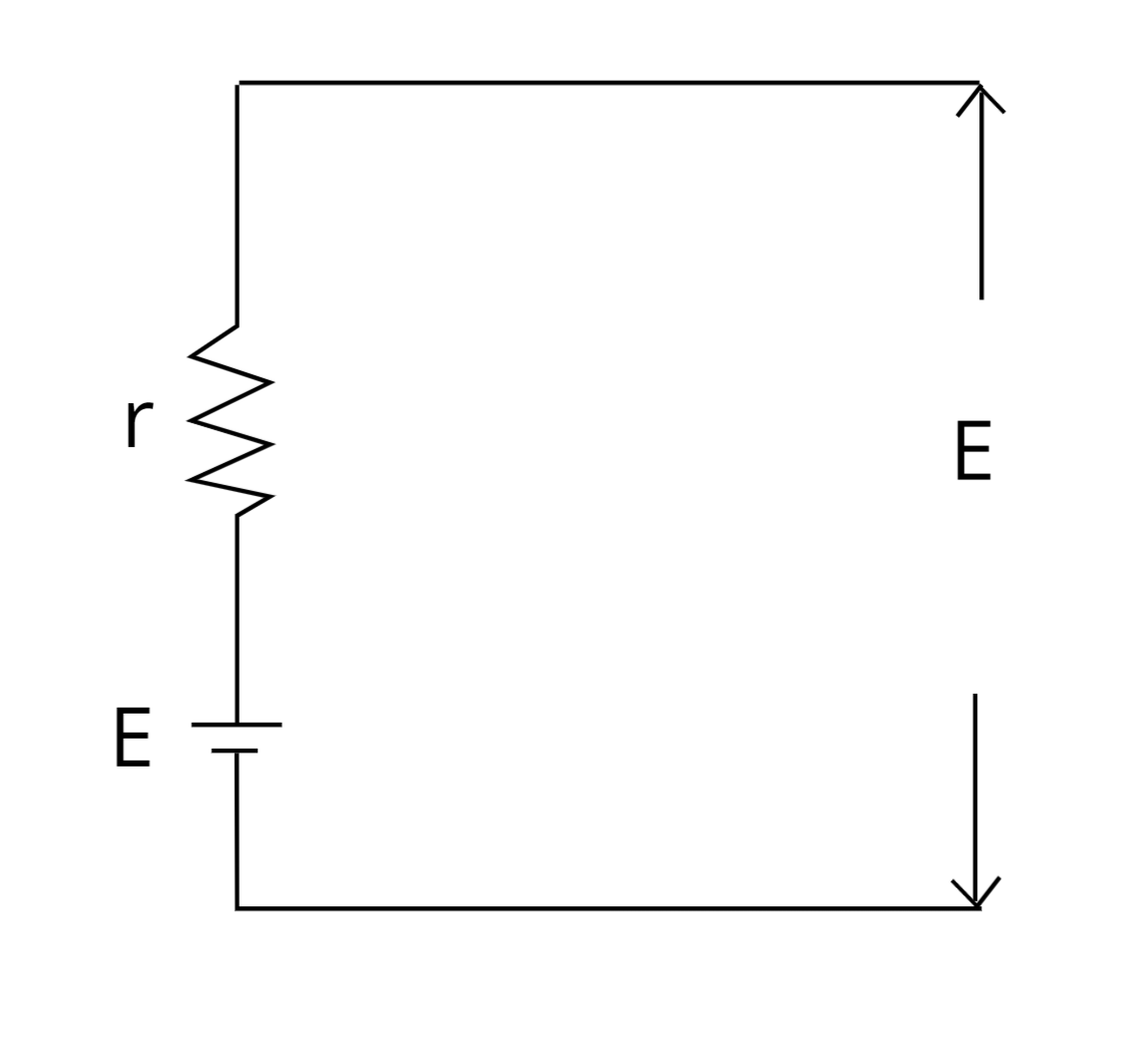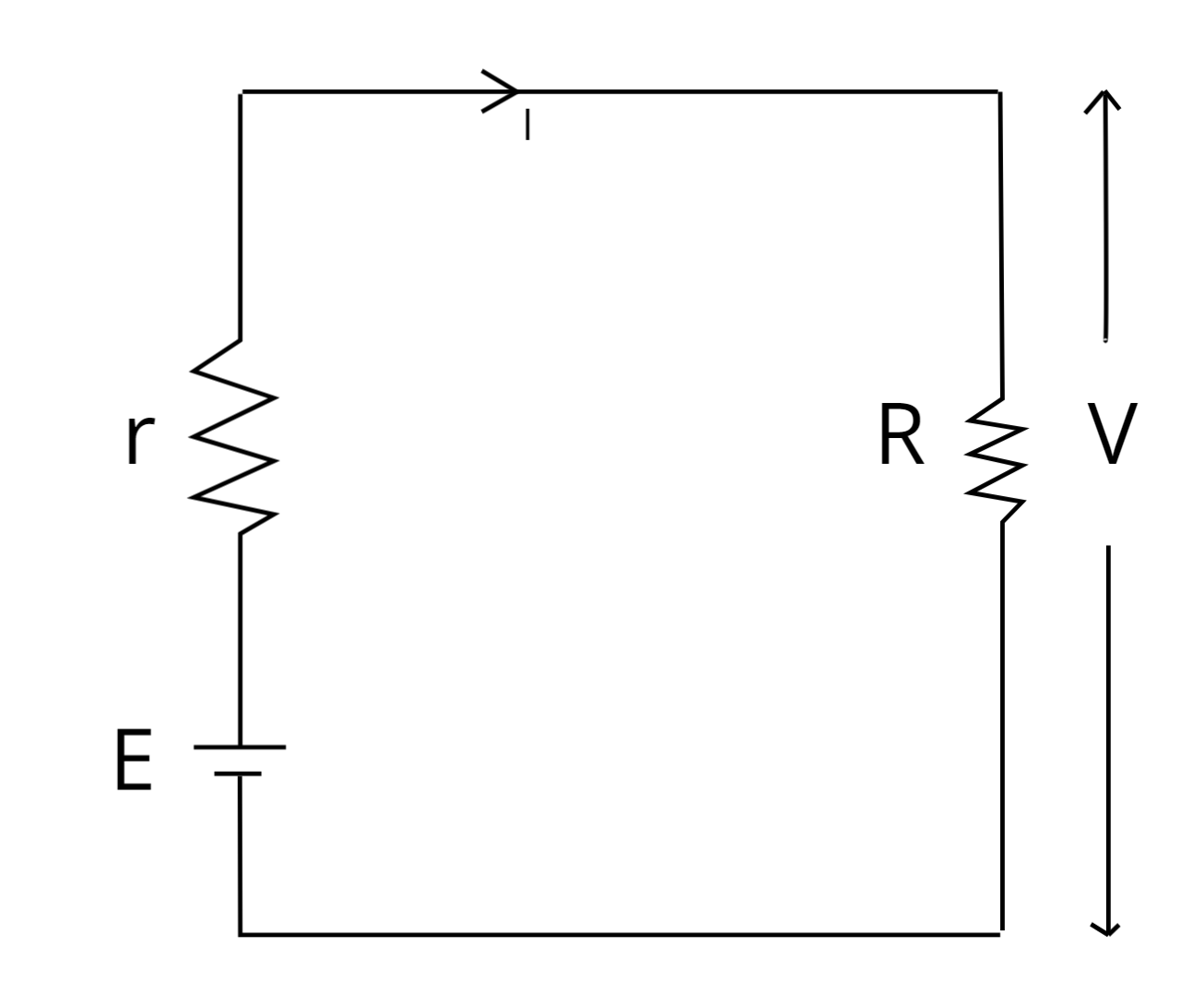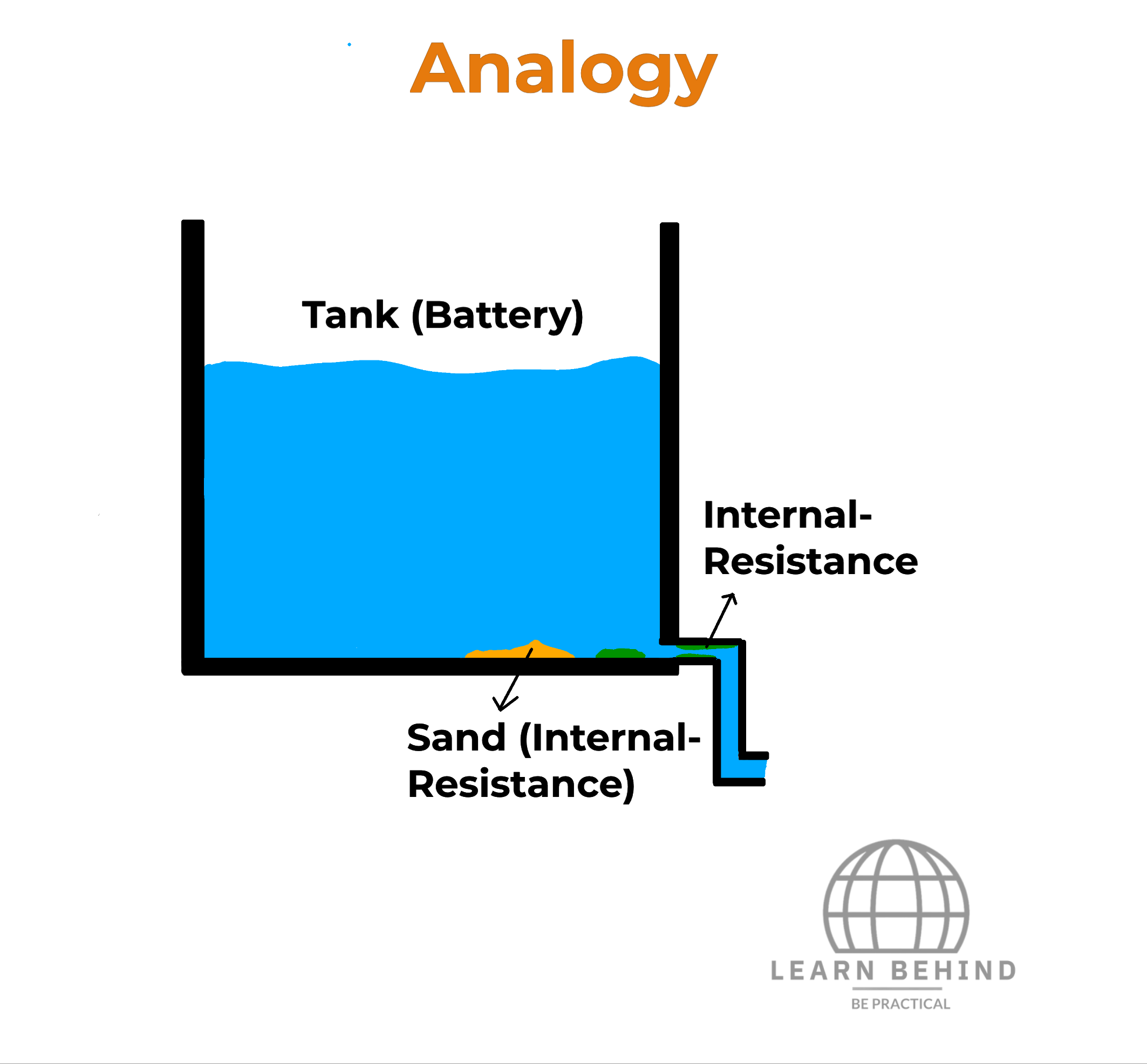Home
Tutorial's
Image collection
Calculator
Projects
MCQ's
3d Models
Invention Hub
How it works
Download Our app
(Last updated on 12-09-2024)
Module 17: EMF and Terminal Voltage of a cell
Case1:
When no load is connected to the circuit (i.e., open circuit )the cell is delivering no current, and then emf of a cell and the voltage across the terminal is same as shown in figure.

Case 2:
When the load is connected to the circuit (i.e., closed circuit), the cell is delivering the current ‘I’ to the load, then voltage drops occur due to the flow of current across the internal resistance of the cell so that the terminal voltage V is less than the e.m.f.E. of the cell.

I = where ‘r’ is internal resistance of a cell
IR +Ir = E
=V Terminal p.d. of the cell
V+Ir = E
Internal Resistance of the cell, r = E -
What is meant by internal resistance of the cell?

Internal resistance is the opposition offered by the electrolyte and electrodes within the cell to the flow of current. When a cell is connected to the load, then the chemical reaction within generates electromotive force, which pushes the current, and due to the electrolyte and electrodes having some resistances, the flow of current will be opposed by their own resistances.
